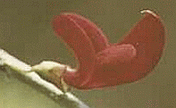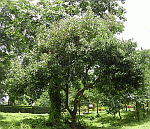
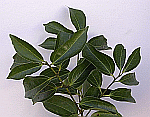
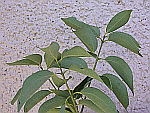
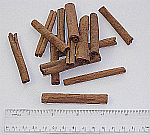
|
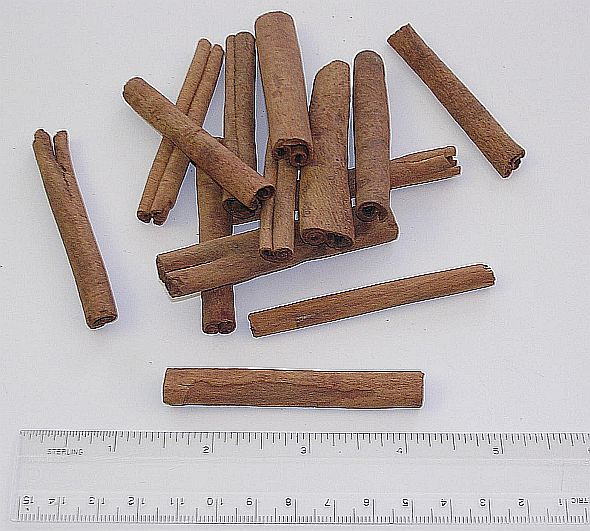
Davison Shillingford
Description: One of the earliest known spices, cinnamon was known from remote antiquity; a small, evergreen tree, up to 15 m tall (50 ft); leaves leathery, with dark green, shiny upper surface, light green lower surface, alternate, broadly ovate; 3-veined from leaf base continuing almost to pointed apex; strongly aromatic, up to 15 cm long (6 in); flowers yellowish and inconspicuous, in axillary panicles similar to terminal panicles of avocado, flowering in February; fruit a small, darkish berry; one tree located in plot on south side of ornamental shrub nursery near parrot aviary; in cultivation young trees cut back twice a year and sucker shoots develop from root, from these shoots bark is harvested and dried, producing the cinnamon stick spice of commerce.
Plant Family: Belongs to the Lauraceae or Laurel family, which includes the Avocado (Persea americana), several trees of the Dominica rain forest - Laurier Jaune (Aniba bracteata) and Laurier Zaboca (Nectandra dominicana), for example - and the culinary Bay Laurel or Bay Tree (Laurus nobilis) of the Mediterranean. [The last is distinct from the West Indian Bay Tree (Pimenta racemosa) of the Myrtaceae family, used in Bay Oil production for colognes and aftershave lotions.]
Natural Habitat: Moist tropical lowlands on deep alluvial sandy soils; propagation by seed with germination in about 3 weeks.
Origin and Distribution: Native to Sri Lanka and S. India; distributed variously throughout tropics and sub-tropics.
Uses: Bark harvested as true cinnamon of commerce, a popular culinary spice – used in cooking, baking and in drinks; also used in candy, gum, incense, toothpaste and perfumes; leaf and stick brewed as tea similar to basil tea or green tea; medicinally, bark and leaf oil used as antiseptic and astringent; bark decoction (hot tea) used for abdominal complaints, leaf infusion (cooling tea) drunk to reduce fever (febrifuge); reportedly, powdered cinnamon ingested daily helps control Type II diabetes in patients not taking insulin.
Indigenous Legends and Anecdotes: Known from remote antiquity, cinnamon was the first mention of a particular spice in the Old Testament; one of the main spices in the European quest for spice from the Indies, culminating in Columbus’ “discovery” of the New World.
References:
Dan H. Nicolson. Flora of Dominica, Part 2: Dicotyledoneae. Smithsonian Institution, Washington, D.C. 1991
Anon. [Joseph Jones?]. Official Guide to the Botanic Gardens, Dominica. Kew Gardens, London 1924?
C.D. Adams. Flowering Plants of Jamaica. University of the West Indies, Mona, Glasgow University Press 1972
H.F. Macmillan. Tropical Planting and Gardening. Macmillan, London 1956
Robert A. DeFilipps. Useful Plants of the Commonwealth of Dominica, West Indies. Smithsonian Institution, Washington, D.C. 1998
Cinnamomum zeylanicum, Cinnamomum verum. Top Tropicals, Davie, Florida, Jan. 2010 (toptropicals.com)
Cinnamon. Wikipedia, The Free Encyclopedia. Jan. 2010 (http://en.wikipedia.org/wiki/Cinnamon)
|

